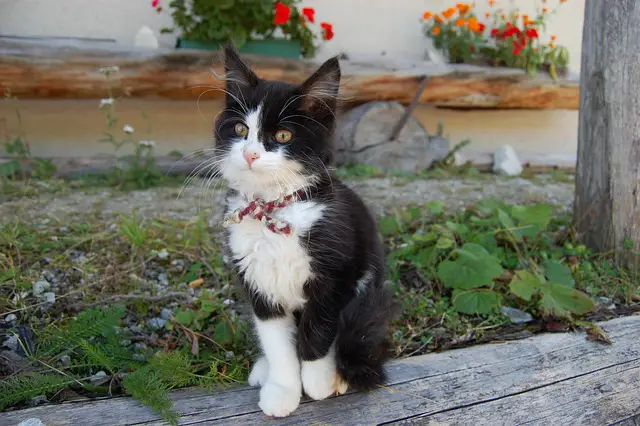Have you ever seen a cat prowling around your local farm or ranch? It’s common to find cats living on farms, but do these cats count as feral, or are they farm cats? It’s essential to understand the difference between feral and farm cats to care for them properly.
Are farm cats feral?
The question of whether farm cats are feral is a complex one. It all depends on the individual cat’s situation and history.
A feral cat may spend some time living near farms and barns, offering them food, shelter, and protection from predators. However, if the same cat has been kept indoors or had contact with humans, it is more likely to be considered an outdoor pet rather than genuinely feral.
Ultimately, it is impossible to definitively say if any given farm cat is genuinely feral based solely on its location or habits around humans.
Suppose you are concerned about a particular farm cat’s status. In that case, it’s best to seek the advice of a veterinarian who can provide a professional assessment and point you toward suitable care options.
What is Feral?
The term “feral” refers to animals removed from their socialized environments, such as human contact and domestication.
These animals often return to a wild state, behaving like wild animals rather than domesticated pets. Feral cats can be found in many habitats, including farms, ranches, and urban areas.
They tend to form colonies of other ferals with which they live and hunt together.
What is a Farm Cat?
A farm cat is typically a domesticated housecat who has been abandoned or allowed to live outdoors on a ranch or farm and is used to help keep vermin down.
They are generally well-socialized with humans, and their behavior resembles that of other housecats.
Unlike feral cats, farm cats often live alone and may not associate with other felines in the area.
Some farmers may even provide food and water for their resident barn cats if they keep them around as mousers or companions.
Identifying Feral vs. Farm Cats
It can be challenging to distinguish between feral and farm cats without proper observation of their behavior or close inspection of their physical characteristics.
Generally speaking, feral cats tend to be more skittish around humans than domestic housecats.
They also tend to have more matted fur due to a lack of grooming since they are not used to being handled by people regularly as domestic housecats would be.
Additionally, feral cats typically have distinctive tabby markings on their coats due to genetics passed down from past generations of wild felines.
In contrast, farm cats usually look like any other pet cat—healthy coat condition with no distinguishing markings—because they have likely been exposed to regular human contact throughout their lives.
Conclusion
In conclusion, it is essential for pet owners and animal lovers alike to understand the difference between feral and farm cats so that they can adequately care for them according to their individual needs.
Feral cats require special handling when captured due to their skittishness around people. In contrast, domestic housecats will require less maintenance as long as they are regularly provided with necessities such as food, water, shelter, love, and affection.
By recognizing whether the stray cat you see on your local ranch is a feral or a friendly farm cat, you can provide the right kind of care needed for each situation accordingly.
[su_box title=”Affiliate Disclosure”]This website is supported by its readers. Please assume that all links are affiliate links. If you make a purchase from one of the links we will make a commission from Amazon. Thank you.[/su_box]




